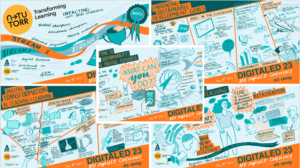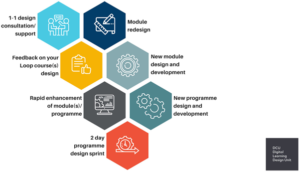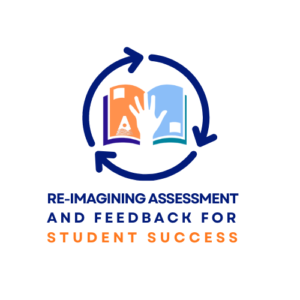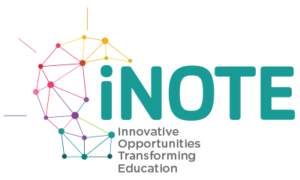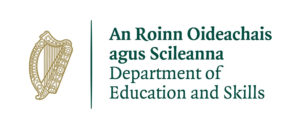The Digital Ed webinar series was an action-packed offering of workshops outlining various aspects of using digital media in teaching and learning.
Here I will outline my experience based on the workshops I managed to attend.
EMPATHY
From the outset the emphasis was on inclusion and awareness of the learners. Never was this clearer than in the Universal Design for Learning workshop with Laura Hegarty. Laura very clearly outlined the factors that require considering when designing teaching materials. For instance, adding subtitles to video recordings simply requires the click of a button, and including alt text for images requires just a few more clicks! With these simple steps teaching resources are easily made more inclusive and accessible to a wider audience.
ENGAGEMENT
I signed up for a workshop called ‘Visual Pedagogies’ not really knowing what to expect but interested by the title – good advertising from workshop facilitator Irene Hayden. In this session Irene talked us through her research on the topic and the potential of visual media in enhancing learning. Especially interesting to me was the virtual reality experience used as a student assessment tool – for example, as architectural students ‘walked’ through a house who would spot the door opening in the wrong place? I could immediately see the potential for this in my own work though it is clear there will be a lot of time (perhaps sweat and tears too!) involved in creating the experiences.
PRACTICAL
The Microsoft morning sessions from Stephen Howell included some more tips on universal design as he outlined accessibility in Microsoft apps – some top tips included the use of styles in MS Word to ensure good functionality with immersive readers and the accessibility checker in MS Word and MS Powerpoint. He then gave a demonstration of Flipgrid (previously outlined by Lucia Cloonan here) which appeared a useful video noticeboard for sharing first year student introductions for instance, and in a colourful, engaging environment. MS Planner appeared a useful tool to help students get organised on projects or tasks, and MS Sway for online portfolios in a digital booklet style, live online or in pdf format. MS Powerpoint has a rehearse with coach option, whereby presentation feedback will be provided to help improve the quality of recordings (only available in the web version). Finally, MS PowerBI, as the name suggests, seems a powerful tool for data visualisation. A whistle stop tour of some of the MS apps!
MOTIVATION
Having heard previously about digital badges, and having gained one without knowing what to do with it, I embarked on a double session on digital badges with Wayne Gibbons (outlined in more detail by Aurora Dimache here). I now have an Open Badge Passport for storing my badges, which can be used to display various competences gained through achieving each badge. Furthermore, we were led through the full process of issuing a badge from the Open Badge Factory. The badge I created was for students who passed all assessment components related to aquaculture and who can then apply for the ‘Ace@Aquaculture’ badge. The value of badges for providing a visually attractive, detailed description of various skills gained during a student’s degree programme was clear. For instance, nowhere on a student’s transcripts would it state that they were competent at a range of skills such as setting up an aquarium system, animal husbandry, filter and air machine checks, and record keeping, though these skills may be of particular interest to a future employer. Having a passport of badges would enable a student to display the skills they have gained, with a clear description of how the badge was earned and who it was issued by.
EXPERIENCE
Educational consultants at the University of Southern Denmark provided an excellent overview of blended and online teaching by outlining their experiences in supporting their teaching staff. Some of their advice included:
- Think first of the goals, process and then the tools required.
- For online activities prepare in advance and develop a clear pathway (GMIT T&L workshops can help).
- Refer to Gilly Salmon’s five-stage model.
- Use a consistent ‘style’ in your teaching materials.
- Post an introductory video of yourself at the start of your course.
- Understand your pedagogical model (e.g. student-led seminar model, video interactive model).
- Icebreaker exercises are important to get students active and engaged.
- Be clear to students on your expectations, and on the consequences should they fail to engage.
- Use peer feedback and peer instruction – and start this early in first year (Peergrade may be useful for this).
COLLABORATIVE
To wrap up the Digital Ed webinar series Caitríona Ní Shé and Orna Farrell, having recently completed online delivery of OpenTeach (soon to be available here), reflected on the experience and recreated some of the successful aspects of the course with those attending the session. Here, the capabilities of Zoom in supporting breakout sessions shone through. A collaborative environment was easily created by splitting the large group into smaller subsets wherein each sub-group discussed their assigned topic. Each teacher was able to ‘zoom’ seamlessly between breakout rooms to check in with the sub-groups. Once the time for the assigned task was complete each sub-group received a countdown, notifying them that they would soon be returned to the large group for a debrief. At present this can be done in MS Teams but only by creating channels for each breakout group, and by hanging up and joining another channel each time you wish to move between the large group or smaller breakout group. If you’re like me and a handful of teaching and learning apps is enough, then here’s hoping MS developers incorporate some of the ease of Zoom by September 1st!
Taken together, as is hopefully clear by now, these sessions reminded me of the importance of having EMPATHY with all of my students, focusing on delivering ENGAGING material in my teaching, with a sound PRACTICAL approach, along with built in rewards for MOTIVATION, by sharing the teaching and learning EXPERIENCE with others, resulting in an enriching COLLABORATIVE community between educators and students.


